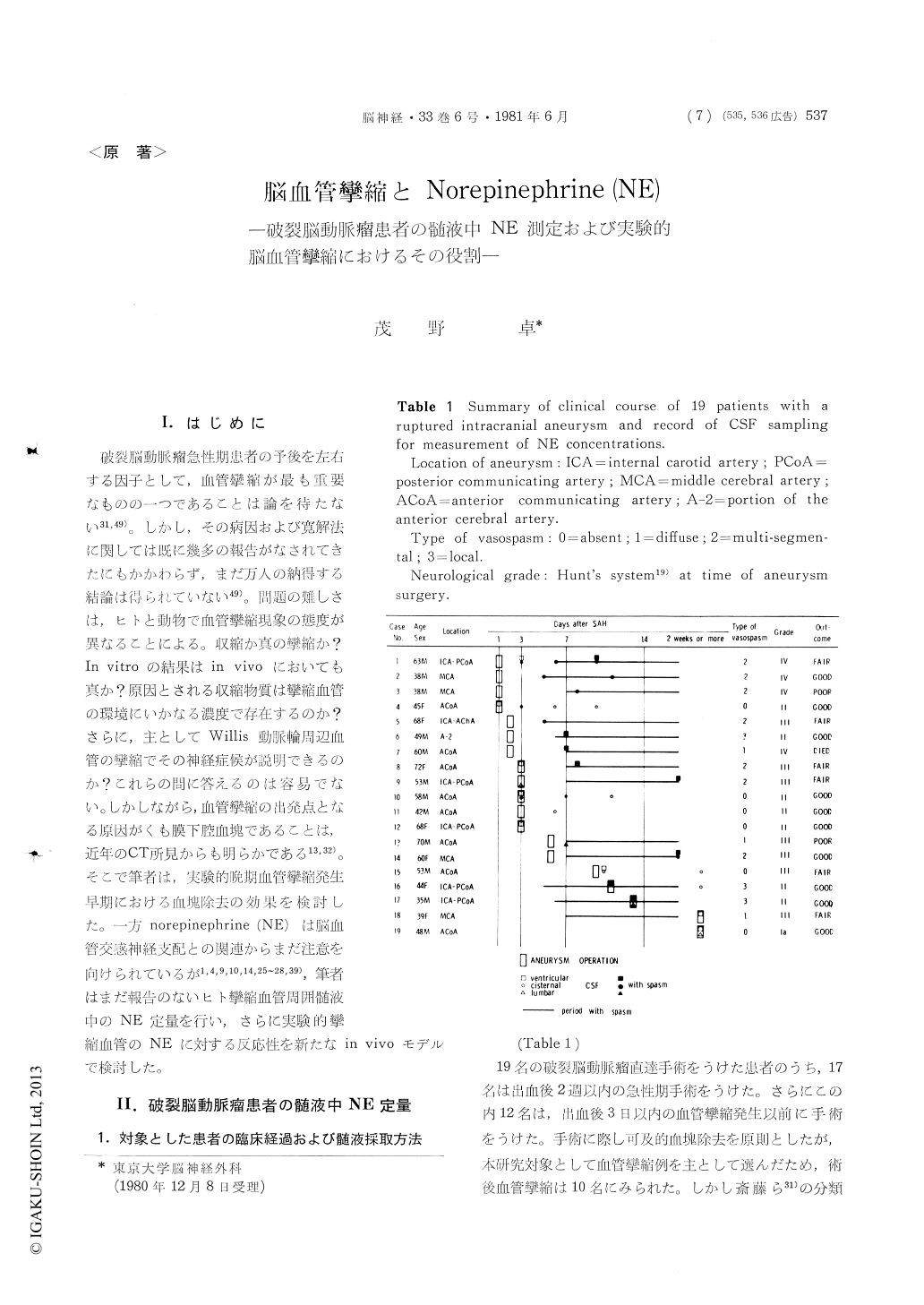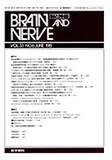Japanese
English
- 有料閲覧
- Abstract 文献概要
- 1ページ目 Look Inside
I.はじめに
破裂脳動脈瘤急性期患者の予後を左右する因子として,血管攣縮が最も重要なものの一つであることは論を待たない31,49)。しかし,その病因および寛解法に関しては既に幾多の報告がなされてきたにもかかわらず,まだ万人の納得する結論は得られていない49)。問題の難しさは,ヒトと動物で血管攣縮現象の態度が異なることによる。収縮か真の攣縮か?In vitroの結果はin vivoにおいても真か?原因とされる収縮物質は攣縮血管の環境にいかなる濃度で存在するのか?さらに,主としてWillis動脈輪周辺血管の攣縮でその神経症候が説明できるのか?これらの問に答えるのは容易でない。しかしながら,血管攣縮の出発点となる原因がくも膜下腔血塊であることは,近年のCT所見からも明らかである13,32)。そこで筆者は,実験的晩期血管攣縮発生早期における血塊除去の効果を検討した。一方norepinephrine (NE)は脳血管交感神経支配との関連からまだ注意を向けられているが1,4,9,10,14,25〜28,39),筆者はまだ報告のないヒト攣縮血管周囲髄液中のNE定量葬行い,さらに実験的攣縮血管のNEに対する反応性を新たなin vivoモデルで検討した。
The Content of norepinephrine (NE) in the ventricular, basal cisternal and lumber CSF was determined by an automated fluorometric method in 19 patients with a ruptured cerebral aneurysm. Tewelve were operated on within three days after subarachnoid hemorrhage (SAH) prior to the occur-rence of vasospasm. Postoperatively CSF was dra-ined from a basal citern and lateral ventricle The content of NE was significantly higher in thecisternal CSF of patients with vasospasm (0.075±0.011ng/ml without vasospasm vs. 0.246±0.049ng/ml with vasospasm, p<0.001). However, this increase is not considered to be high enough to constrict the cerebral arteries, unless there is an increased NE-sensivity of the arteries exposed to SAH. To clarify this point, the following two different sets of in vivo experiments were carried out.
In one group of 5 rabbits, the basilar artery was exposed transclivally 24 hours after injection of autologous blood into the cisterna. Immediately after removal of subarachnoid blood around the artery, vasospasm was observed. Afterwards, the basilar artery was irrigated with mock CSF, lend-ing to resolution of spasm to varying degrees. However, subsequent application of NE in conce-ntrations between 1×10-10 and 10-2M failed to produce recontraction. In another group of 7 rabbits, angiography which was performed 24 hours after injection of blood into the basal cistern through a transorbital catherer showed vasospasm. Then, mock CSF was perfused through the catheter with an opning of the cisterna magna. In 6 out of these animals,where subarachnoid blood was found to be washed out well, vasodilatation was observed. Subsequent perfusion with NE in various conce-ntrations, however, caused no reccurrence of vaso-spsm.
In conclusion, there was an adrenergic overacti-vity in the presence of vasospasm, but NE itsself caused no vasospasm. Early removal of subarachn-oid blood seems to prevent the development of vasosnasm

Copyright © 1981, Igaku-Shoin Ltd. All rights reserved.


